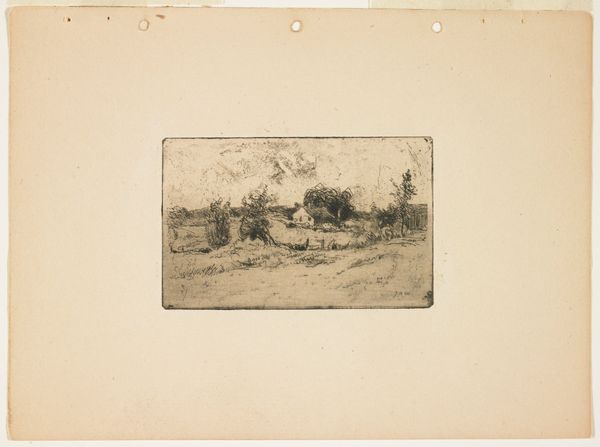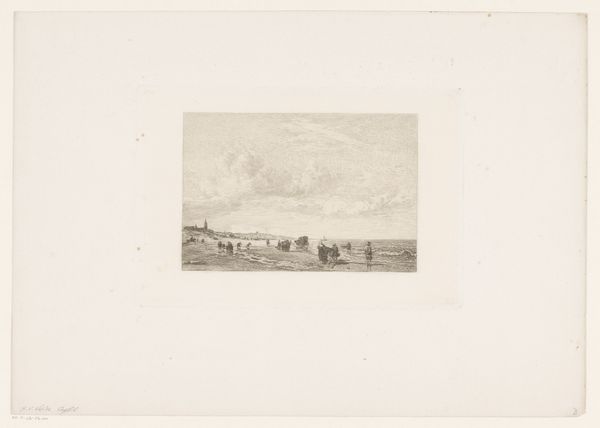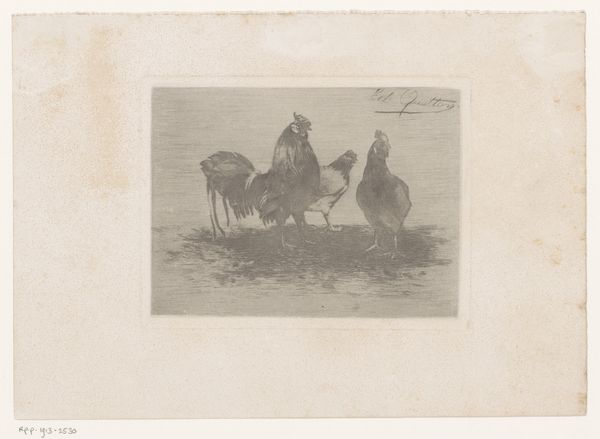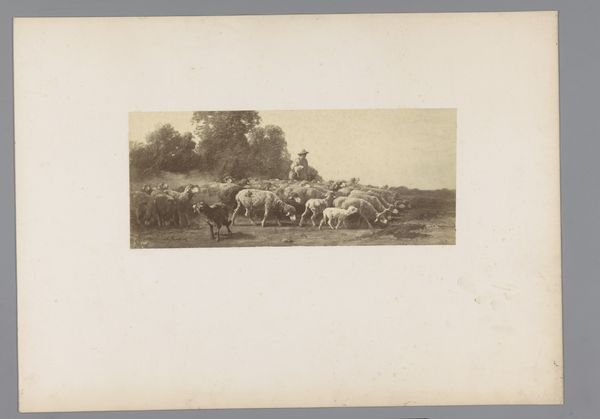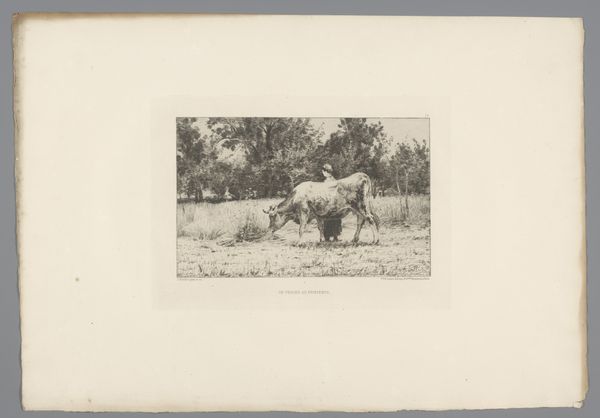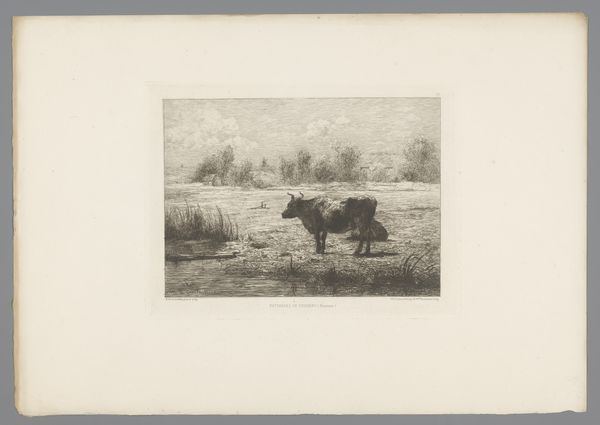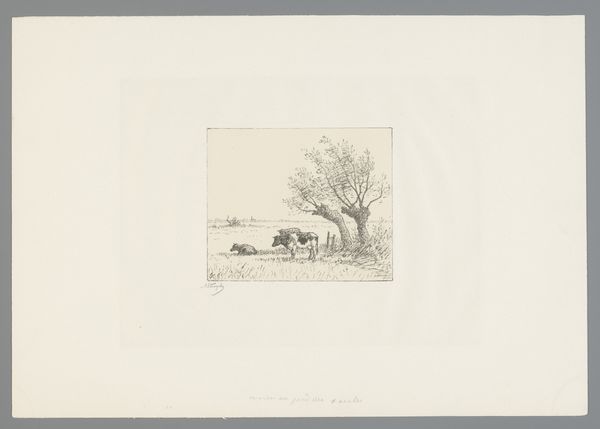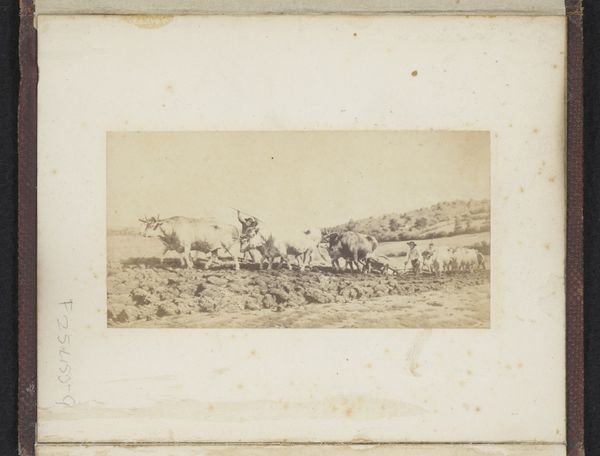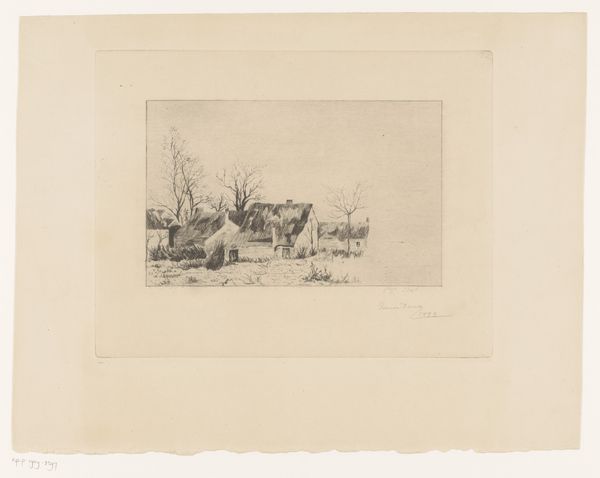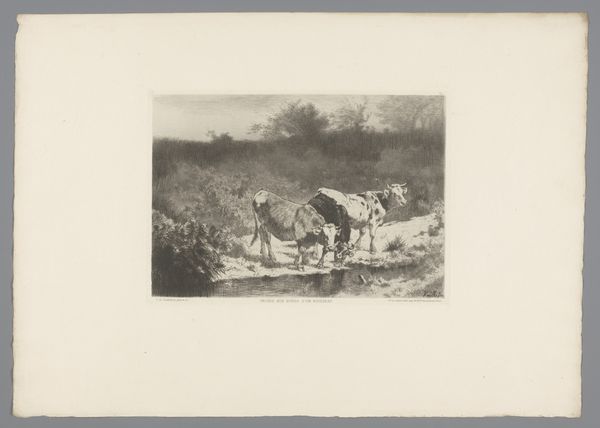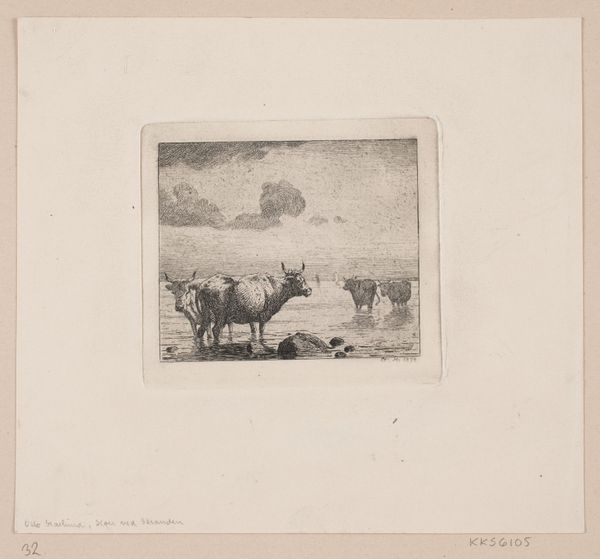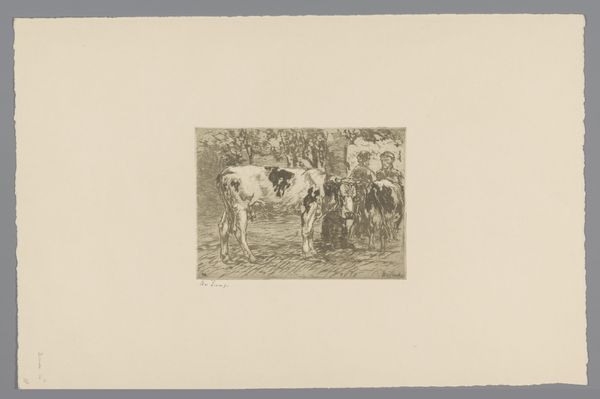
print, photography
#
pictorialism
# print
#
landscape
#
photography
#
realism
Dimensions: height 104 mm, width 155 mm, height 210 mm, width 255 mm
Copyright: Rijks Museum: Open Domain
Editor: So, this is "Overstroming in Nieuwkuijk" or "Flooding in Nieuwkuijk," a print from around 1880 by Albert Greiner, housed here at the Rijksmuseum. It feels…bleak. The light is flat, and everything is very gray. What do you see in its composition that might be contributing to that mood? Curator: It's precisely this tonality, its subtle gradations of gray, that arrests my attention. Observe how the artist manipulates light and shadow, particularly the layering of the planes in the water. Can you see how the almost symmetrical distribution of the four tents establishes the center, like structuralist concept, marking not an absolute origin but a key function in this picture. Editor: I do, now that you point it out! The eye is drawn to the center, then spreads out around. It’s a stark image made softer through the gradation you mentioned, preventing harsh outlines, right? Curator: Indeed. It achieves a fascinating interplay. Do you notice the absence of stark contrasts in the horizontal lines and in relation to their vertical counterpoints? The composition refrains from bold definition; note how all blends. Is this a study of how we might see in that condition? Editor: So, focusing less on the subject matter and more on how those artistic choices build the image. This subdued effect creates a calm, balanced artwork, even though the scene itself depicts disruption, but in pictorialist style with landscape. Curator: Precisely. By eschewing narrative and sentimentality, this photographic print challenges us to confront the intrinsic aesthetic properties of representation, such as pictorialism, landscape, realism and even medium such as photography. How would you characterize Greiner's arrangement and use of shading now, given our brief structuralist approach? Editor: Well, the arrangement feels much more purposeful now. Seeing the way the values interact and support that main point of focus changes the bleakness I felt into something quieter, reflective, which I found extremely insightful. Thanks for highlighting that! Curator: And thank you for your insights. Viewing artworks with keen interest in these semiotic and structural relations shows new insights and layers.
Comments
No comments
Be the first to comment and join the conversation on the ultimate creative platform.

